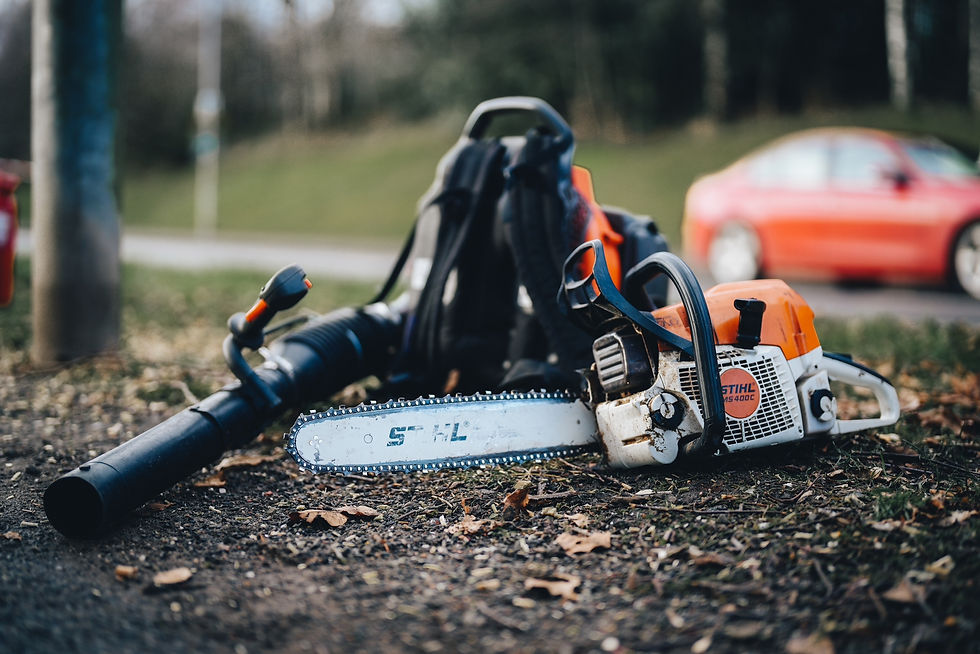What does CODIT mean?
- Neil Foote

- Jan 16, 2024
- 3 min read
The Science of Tree Compartmentalization: An In-Depth Guide for Tree Enthusiasts.
Introduction
In the field of Arboriculture, one of the most significant processes that tree surgeons must understand is the compartmentalization of decay in trees (CODIT). This natural mechanism is a tree's method of protecting itself against external injuries and internal decay. As tree care professionals, our practices can significantly influence the effectiveness of this process. This guide delves deeply into the science behind tree compartmentalization, offering insights that are crucial for effective and responsible tree management.
Understanding Tree Compartmentalization
Compartmentalization of Decay in Trees (CODIT) is a concept developed by Dr. Alex Shigo, a renowned tree pathologist. This process describes how trees isolate and contain damaged or diseased tissue to prevent the spread of decay. When a tree is injured, either through environmental factors or human activities, it reacts by forming both chemical and physical barriers around the affected area. These barriers, known as "walls", are designed to quarantine the damaged tissue and halt the progression of decay. The process involves four types of walls: Wall 1 (vertical separation in the xylem), Wall 2 (horizontal separation between growth rings), Wall 3 (radial tissue separation, the weakest barrier), and Wall 4 (a robust barrier in the cambium layer, the strongest defense).
The Four Walls of Defense
The concept of CODIT is centered around four distinct walls or barriers that a tree develops in response to injury:

Wall 1: This vertical barrier is formed along the xylem, aiming to limit the vertical spread of pathogens.
Wall 2: It represents the horizontal separation, preventing the spread of decay between the growth rings.
Wall 3: This is the weakest of the barriers, separating the radial tissues.
Wall 4: The strongest barrier, formed in the cambium layer, this wall plays a crucial role in inhibiting the outward spread of decay.
Each wall has a specific role in the tree's defense strategy, working collectively to ensure the containment of any decay or infection.
Implications for Tree Surgery on your trees
Understanding these defense mechanisms is essential for tree surgeons. When performing tree surgery, it's crucial to minimize damage to these barriers. For example, improper pruning techniques can compromise Wall 4, leading to extensive decay. Additionally, understanding the location and function of these walls can guide tree surgeons in making informed decisions about the type and extent of interventions needed for tree health management.
Best Practices in Tree Surgery
Key practices for tree surgeons include:
Pruning: Execute clean, precise cuts outside the branch collar to avoid damaging Wall 4. This practice helps in preserving the tree's primary defense against decay.
Disease Management: Early identification and management of diseases are vital. Treating diseases before they cause extensive damage reduces the tree's need to compartmentalize, thereby maintaining its overall health and vigor.
Tree Health Assessment: Regular monitoring of tree health allows for the early detection of decay or damage, guiding timely and effective management.
The Role of Tree Surgeons in Supporting Compartmentalization
Tree surgeons play a crucial role in supporting a tree's natural defense mechanisms. By understanding and respecting the process of compartmentalization, tree care professionals can significantly contribute to the health and longevity of trees.
Conclusion
The compartmentalization of decay in trees is a remarkable natural process that showcases the resilience and adaptability of trees. As tree surgeons, our role in facilitating and supporting this process is paramount.
By applying our knowledge and adhering to best practices in tree care, we can effectively assist trees in their extraordinary self-defense mechanisms. Our actions, from careful pruning to diligent disease management, can make a significant difference in the life and health of a tree. Understanding and respecting the science of tree compartmentalization not only benefits the trees we care for but also enhances our professionalism and effectiveness as tree surgeons.

.png)


Comments